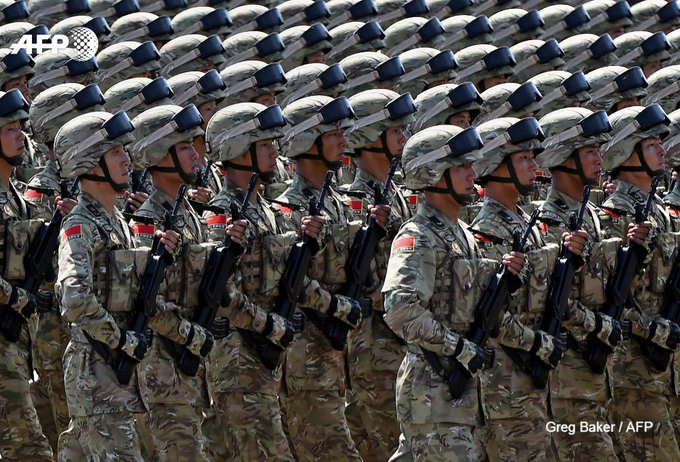BY CRISTINA SILVA
As President Donald Trump arrives in Beijing on Wednesday afternoon to a red-carpet welcome from China, in the background will be simmering tensions between the world's greatest economic powers--and militaries.
While Trump is looking to befriend Beijing's economic and political leaders, China's powerful military has increasingly focused in recent years on managing its rank-and-file outside its immediate periphery, a modernization effort that could one day pose greater risks to U.S. interests in Asia and beyond.
"The range and capabilities of Chinese air and sea defenses have continued to grow, making U.S. forward-basing more vulnerable and the direct defense of U.S. interests in the region potentially more costly," according to an October report by the RAND Corporation, a California-based think tank that does research and analysis on behalf of the U.S. military. "As these trends continue, the United States will find itself gradually pushed more toward the threat of horizontal or vertical escalation for deterrence, with the attendant risks of counter-escalation. Neither the United States nor China is likely to employ nuclear weapons, but even an initially localized conflict could quickly spread into the economic, cyber, and space realms, doing considerable damage to both sides."
These days, China has more ballistic missiles for both nuclear missions than ever and it just opened its first overseas military base in the small African country of Djibouti in October. Beijing grew its military budget by an average rate of about 9.5 percent every year from 2005 to 2014, paying for quieter submarines, modern fighter aircraft and unmanned
Unlike the U.S., which has engaged in costly wars for decades without break, China hasn't seen a major conflict since a brief war with Vietnam in 1979. And unique from the U.S.? China does not have military allies to back up its ambitions, according to a March 2016 report from the U.S. Congressional Research Service.
The U.S. has a far bigger navy than China, with 500 vessels. China has 300 warships. When it comes to its air force, China has the world’s second-largest fleet of jet fighters. The U.S. is in first place with 2,800 jets to China's 1,500 jets.
The U.S. far outspends China when it comes to defense. Washington earmarked $610 billion on military costs in 2014. That's nearly three times as much as China, the second-highest military spender in the world, which dropped $216 billion on defense.
One advantage for China? It's massive population. China counts more than 2.3 million active service members, and another 1.1 million in reserves and military police, or the largest ground force in the world. That's down from more than 3 million in active service in 1992. The U.S. has about 1.4 million active service members.

No comments:
Post a Comment